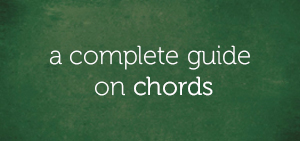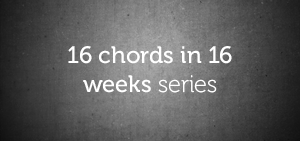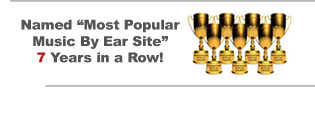Today, I want to talk about the “6-4” chord.
Usually, it’s written with the 6 on top of the 4 (something like 64) but I’ll just use “6-4” to make things easier.
Here’s the thing…
I’m pretty sure you’ve already played this chord. In fact, it’s nothing new.
A 6-4 chord is basically a chord in second inversion. (But don’t sleep on this one yet because there’s something special about this type of chord that differentiates it from the other inversions).
Recall the chord inversions of a triad:
Root position
1+3+5First inversion
3+5+1Second inversion
5+1+3
Basically, root position is when the keynote of the chord is on the bottom:
C major
C + E + G
*”C” is the keynote, “E” is the third, and “G” is the fifth (thus, 1+3+5).
First inversion is when the third of the chord is on the bottom:
C major
E + G + C
*”E” is the third, “G” is the fifth, and “C” is the keynote (thus, 3+5+1).
And lastly, second inversion is when the fifth of the chord is on the bottom:
C major
G + C + E
*”G” is the fifth, “C” is the keynote, and “E” is the third (thus, 5+1+3).
So a “6-4” chord is when you have:
- An interval of a fourth above the bass.
- And an interval of a sixth above the bass.
Now, let’s create a chord based on these rules:
Keynote/Root: C
(this will be the lowest note of the chord)4th above the root: F (this is real the “root” of the chord)
6th above the root: A
C+F+A
That chord should look pretty familiar but the key is how it’s used in chord progressions as we’ll soon discover…
Historically, second inversions have been considered more dissonant and unstable than first and root inversions — especially, when you split up the chord and play C on the left hand and F+A+C on the right.
Don’t be confused. You’re probably thinking that “F+A+C” is an F major chord in root position. But when you consider the bass (which is the 5th of the chord), then it’s really an F major chord in second inversion:
C (bass) + F + A + C
So basically, when you play a major chord with it’s 5th note as the bass, you’re playing a 6-4 chord.
When are “6-4” chords used?
Since they are unstable and need to resolve, you usually see them leading to a 5-chord.
Like in this example:
G + C + E on right / G on left (this is a “6-4” chord)
G + B + D on right / G on left
E + G+ C on right / C on left
Or in this example:
G + C + E on right / C on left
G + B + D on right / D on left (this is a “6-4” chord)
G + C + E on right / E on left
Basically, you can think of “6-4” chords in two ways:
1) You can focus on the bass note and play a major chord a fourth on top of it (on the right hand). An example of this would be taking a keynote like C and then figuring out what’s a fourth up from C. Once you figure out that it’s F, simply play an F major chord over C (C + F + A + C). That’s essentially a 6/4 chord. But remember, C is just the lowest note, NOT the root. F is still the root and this is no doubt an F major chord.
2) You can focus on the chord itself and just play the fifth degree of the chord as the lowest note (bass). So in this case, the chord is F major. Just play the fifth as the bass note (“C”) and you’ve got yourself a 6/4 chord. (C + F + A + C). Again, 6-4 chords are just basic major chords with their fifth as the lowest note.
C major
“I believe I can fly”
C major over G bass (which is essentially C major in second inversion, or a “6-4”)
G + C + E on right / G on left
“I believe I can fly~~~”
D half-diminished 7th
Ab + C + D + F on right / D on left
(Ending just keeps repeating those chords).
Note: C major may not be the same key the song is played in… just an example
Tomorrow, I’m going to cover neighboring 6-4 chords, passing 6-4 chords, pedal 6-4 chords, and more.
Until next time —







Comments on this entry are closed.